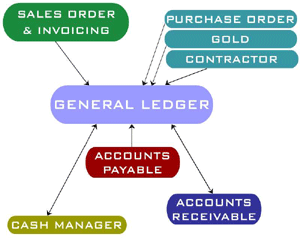
Try FreshBooks for free to streamline difference between budget and forecast your tax preparation and bank reconciliations today. The information on your bank statement is the bank’s record of all transactions impacting the company’s bank account during the past month. Compare the ending balance of your accounting records to your bank statement to see if both cash balances match. One of the most common causes of discrepancies in bank reconciliations is delays in deposit and transaction processing.
- Notice that the bank reconciliation form above still does not balance, even after including the outstanding checks.
- Unpredictable interest income may also be a challenge when calculating financial statements, which can lead to challenges during a bank reconciliation.
- As a result, your balance as per the passbook would be less than the balance as per the cash book.
- Financial accuracy is also important for ensuring that all payments have been fulfilled and orders have been completed.
These debits made by the bank directly from your bank account will lead to a difference between balances. Therefore, an overdraft balance is treated as a negative figure on the bank reconciliation statement. You need to subtract both checks from your bank balance, as well as any other checks listed in your check register that haven’t cleared. For example, your bank statement shows that your ending balance is $11,450, while your G/L balance according to your trial balance is $10,850. If not, you’re most likely looking at an error in your books (or a bank error, which is less likely but possible).

For interest-bearing accounts, a bank adjustment could be the amount of interest you earned over the statement period. Reconciling your bank statement used to involve using a checkbook ledger or a pen and paper, but modern technology—apps and accounting software—has provided easier and faster ways to get the job done. Regardless of how you do it, reconciling your bank account can be a priceless tool in your personal finance arsenal.
Adjusting the Bank Statement Balance
Deposits in transit are amounts that are received and recorded by the business but are not yet recorded by the bank. In addition, there may be cases where the bank has not cleared the checks, however, the checks have been deposited by your business. Banks take time in clearing checks, so the bank needs to add back the check’s amount to the bank balance. At times, your business may either omit or record incorrect transactions for checks issued, checks deposited, or the wrong total, etc.
Companies prepare bank reconciliation statements as a comprehensive accounting comparison tool. A company can ensure that all payments have been processed accurately by comparing their internal financial records against their bank account balance. Bank reconciliation statements are also important for alerting a company in case of fraud or error. To be effective, a bank reconciliation statement should include all transactions that impact a company’s financial accounts. The reconciliation of bank statements is a critical step in maintaining accurate financial records for any business, ensuring that the company’s accounting records are up-to-date and accurate. By reconciling bank statements regularly, business owners can identify any missing or duplicate transactions, bank errors, or fraudulent activity early on, before they pose significant challenges.
Check income and expenses
There are times when the bank may charge a fee for maintaining your account, which will typically be deducted automatically from your account. Therefore, when preparing a bank reconciliation statement you bank guarantee vs letter of credit must account for any fees deducted from your account. Make sure that you’ve also taken into account all deposits and withdrawals to an account when preparing the bank reconciliation statement. You need to determine the underlying reasons responsible for any mismatch between balance as per cash book and passbook before you record such changes in your books of accounts.
However, small business owners and bookkeepers need to remember that yes, banks do make mistakes, and one of the best ways to find those mistakes is by reconciling all of your bank accounts monthly. A liability account on the books of a company receiving cash in advance of delivering goods or services to the customer. The entry on the books of the company at the time the money is received in advance is a debit to Cash and a credit to Customer Deposits. When a company writes a check, the company’s general ledger Cash account is credited (and another account is debited) using the date of the check. Therefore, a check dated June 29 will be recorded in the company’s accounts using the date of June 29, even if the check clears (is paid through) the company’s bank account one week later. Not recording all transactions in the accounting system can lead to discrepancies between the balance sheet and the bank statement, making it difficult to how to calculate contribution per unit reconcile.
How to Prepare a Bank Reconciliation
Bank reconciliation statements ensure that payments were processed and cash collections were deposited into the bank. Bank reconciliation statements are often used to catch simple errors, duplications, and accidental discrepancies. Taking the time to perform a bank reconciliation can help you manage your finances and keep accurate records.
Make Necessary Adjustments in the Balance as per the Cash Book
This is due to the time delay that occurs between the depositing of cash or a check and the crediting of it into your account. Remember that items such as outstanding checks do not need be recorded into the G/L since they are already there. However, anything that affects the G/L such as unexpected deposits, interest income, or service fees will need to be recorded.
In cases where you discover discrepancies that cannot be explained by your financial statements, it’s best to contact your bank. It’s possible that a banking error has occurred or that you have been charged for something you were unaware of. If the charges are not from your bank, the bank can also help you identify the source so that you can prevent any fraud or theft risk. When done frequently, reconciliation statements help companies identify cash flow errors, present accurate information to investors, and plan and pay taxes correctly.